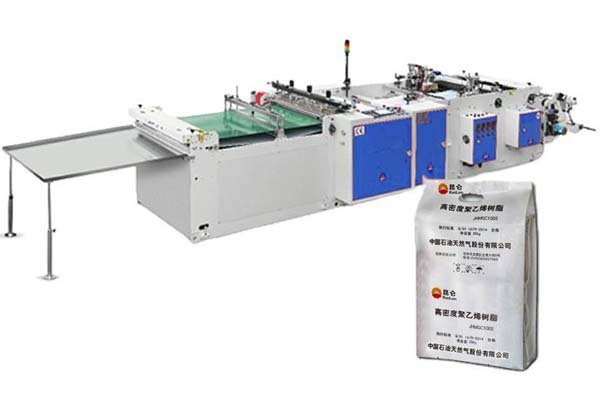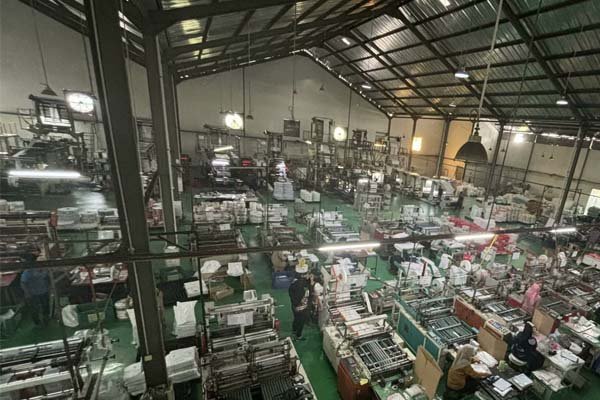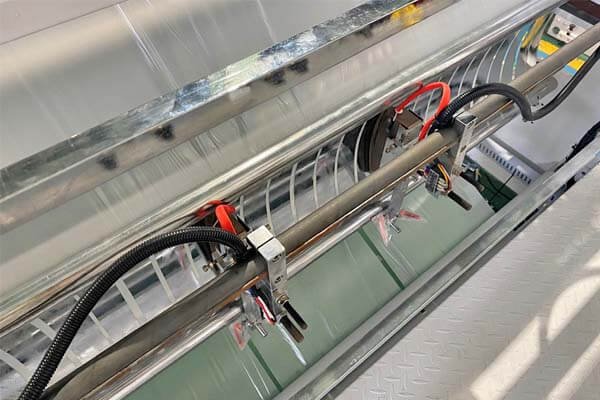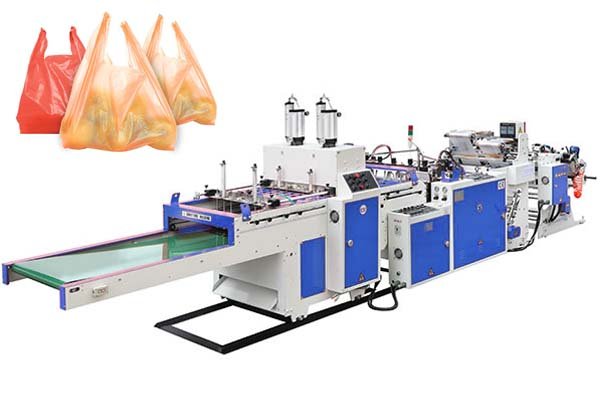
Struggling with weak cement bags that burst and waste product? You need strong materials and dependable machines. Here's how to build a solid production line.
Cement bags are made by selecting tough materials like woven polypropylene (WPP) or kraft paper, printing branding, and using machines to cut, fold, and seal the bags — often with a valve for easy filling.
The Manufacturing Process
Everything starts with choosing the right material. Woven PP is tear-resistant and water-repellent. Kraft paper is strong and breathable. Once chosen, the material goes through a printing press, then into a bag-making machine.
Our machines automate this with precision: they unroll the material, cut it to size, fold it, and heat-seal the sides. For valve bags, a dedicated module adds the valve opening for filling. The result: strong bags that meet quality standards at scale.
What Type of Machine Is Used?

Woven Bag Making Machines are used for PP bags. Kraft Paper Bag Machines are used for paper sacks. For full automation, Form-Fill-Seal (FFS) machines form, fill, and seal bags in one step.
Cement Bag Machinery Options
Each machine type serves a specific need based on your material and automation level.
Woven PP vs. Kraft Paper Machines
| Feature | Woven PP Bag Machine | Kraft Paper Bag Machine |
|---|---|---|
| Material | Woven Polypropylene | Multi-wall Kraft Paper |
| Sealing | Heat / Ultrasonic | Cold Glue |
| Advantage | Waterproof, tear-resistant | Biodegradable, breathable |
| Best Use | Humid climates, long hauls | High-speed filling, eco-markets |
FFS (Form-Fill-Seal) Systems
FFS machines automate bag production. They turn rolls of film into filled, sealed bags — fast. Our FFS machines can output 2,500+ bags/hour and cost between $34,000 and $48,000.
Best Materials for Cement Bags

Top materials: Woven PP for strength and moisture resistance. Kraft paper for porosity and eco-friendliness.
Material Deep Dive
Why Woven PP?
- Durability: Strong against tears and punctures.
- Moisture Resistance: Naturally water-repellent; fully waterproof with lamination.
- Cost-Effective: Lightweight, saves on shipping.
Why Kraft Paper?
- Porosity: Releases air during fast filling, prevents blowouts.
- Eco-Friendly: Biodegradable and from renewable sources.
- Print Quality: Clean, natural look for branding.
Material Comparison
| Feature | Woven PP | Kraft Paper |
|---|---|---|
| Durability | Excellent | Good |
| Moisture Resistance | Excellent (with lamination) | Poor |
| Cost | Lower | Higher |
| Sustainability | Recyclable plastic | Biodegradable |
| Filling Speed | Good | Excellent |
Cement Bag Plant Setup Costs

Cost ranges from $50,000 (basic) to $500,000+ (fully automated).
Cost Breakdown
- Machinery: $12K–$23K for basic machines; $34K–$48K for FFS.
- Raw Materials: Rolls of WPP or kraft paper.
- Facility: Industrial space, electricity, air supply.
- Labor: Hire and train staff. We offer onsite training.
Semi vs. Fully Automatic Comparison
| Aspect | Semi-Automatic | Fully Automatic |
|---|---|---|
| Investment | $50K–$150K | $200K–$500K+ |
| Labor Cost | Higher | Lower |
| Speed | Slower | Fast |
| Consistency | Operator dependent | Very high |
| Best For | Startups | Large producers |
How BagMec® Helps You Save
We offer machines across price ranges, energy-efficient motors (cut power use by 30%), and durable designs to reduce downtime.
Cement Bag Quality Standards
Key standards: drop resistance, tear strength, moisture protection, and load capacity. Bags should meet ISO 21898 and relevant national standards.
Essential Tests
- Drop Test: Bags must survive drops from 1.2m without bursting.
- Tensile Strength: Checks material strength under tension.
- Puncture Resistance: Measures force to pierce bag.
- COBB Test (paper): Measures water absorption.
How Our Machines Ensure Quality
Each BagMec® machine passes a 5-step quality process:
- Component Testing: Verify strength of materials.
- Laser Alignment: Ensures cutting/sealing accuracy.
- 72-Hour Burn-In: Continuous testing for reliability.
- Safety Check: Meets CE and international safety codes.
- Final Test: Full inspection before delivery.
Smart Tension Control maintains perfect film feeding for strong, consistent seams.
Conclusion
Making cement bags that hold up under pressure means using the right materials, machines, and process. BagMec® delivers rugged equipment built for nonstop performance — helping you produce bags that work as hard as your team does.






